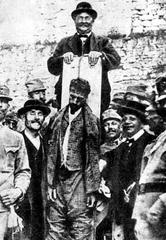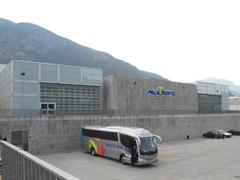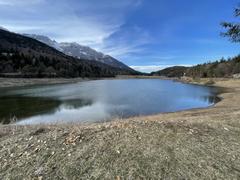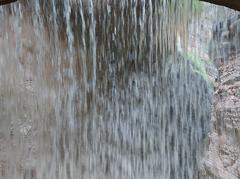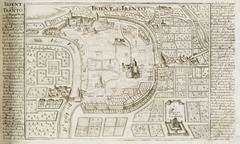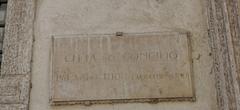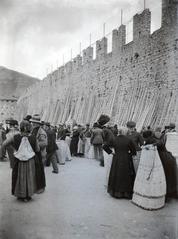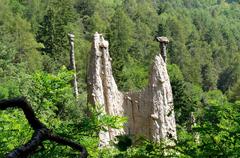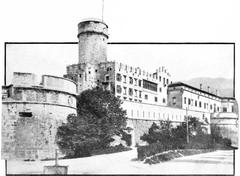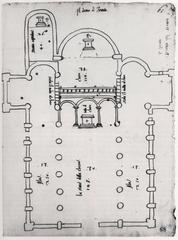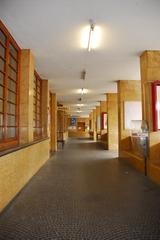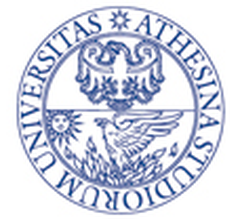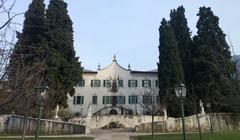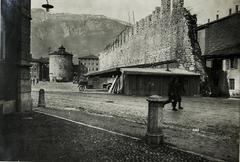Old Town Hall (Palazzo Pretorio) Trento: Visiting Hours, Tickets, and History
Date: 14/06/2025
Introduction
The Old Town Hall, or Palazzo Pretorio, stands at the heart of Trento’s Piazza Duomo as a remarkable testament to the city’s enduring historical, political, and artistic legacy. Built in the mid-12th century as the residence for Trento’s Prince-Bishops, this iconic monument has witnessed centuries of governance, religious transformation, and civic life. Its Romanesque architecture, Renaissance embellishments, and the adjacent Torre Civica together narrate Trento’s multifaceted history, from medieval resilience through the pivotal Council of Trent, to its modern role as home to the Museo Diocesano Tridentino (Italia.it; Visit Trentino).
This guide provides a comprehensive overview for visitors, covering historical background, key architectural features, cultural significance, practical travel tips, visiting hours, ticket information, accessibility, and recommendations for nearby attractions.
Contents
- Early Origins and Medieval Foundations
- Renaissance Transformations and Artistic Flourishing
- Architectural Features and Evolution
- Role in Civic and Religious Life
- Artistic and Cultural Significance
- Preservation and Modern Use
- Visitor Information: Tickets, Opening Hours, and Accessibility
- Nearby Attractions and Travel Tips
- Frequently Asked Questions (FAQ)
- Summary and Final Advice
- References
Early Origins and Medieval Foundations
Constructed in the mid-12th century, the Old Town Hall was originally designed as the official residence and administrative seat of Trento’s Prince-Bishops. Its Romanesque core, characterized by thick stone walls and semicircular arches, remains visible today. The adjacent Torre Civica (Civic Tower) was built in the same era, reinforcing the square’s strategic and symbolic importance (Italia.it).
Located in Piazza Duomo, the city’s nucleus for commerce, politics, and faith, the Town Hall’s proximity to the Cathedral of San Vigilio symbolized the intertwined nature of civil and ecclesiastical authority (Visit Trentino). During this period, the building served as both a bishop’s residence and a site for ceremonial and administrative functions.
Renaissance Transformations and Artistic Flourishing
The 16th century marked a period of significant expansion and artistic renewal for the Old Town Hall, coinciding with the Council of Trent (1545–1563). This ecumenical council, held largely in the adjacent cathedral, brought an influx of clergy, diplomats, and artists to the city (Italia.it). The Palazzo Pretorio was adapted to embrace Renaissance ideals: its façade was decorated with frescoes depicting allegorical themes, and its loggias and arcades were expanded to accommodate grand civic events and council meetings (Visit Trentino).
Architectural Features and Evolution
The Old Town Hall’s architecture reflects the evolution of Trento’s civic pride and artistic tastes. Romanesque robustness on the ground floor—typified by arched arcades opening onto Piazza Duomo—transitions into Renaissance elegance on the upper levels, with mullioned windows and refined cornices (My Italian Diaries). Interiors boast vaulted ceilings, grand staircases, and period furnishings, while restoration efforts over the centuries have preserved the building’s integrity and historical detail.
The adjacent Torre Civica, rising approximately 45 meters, served as both a watchtower and a symbol of municipal power, visually anchoring the city’s central square (paulmarina.com).
Role in Civic and Religious Life
For centuries, the Old Town Hall was the administrative heart of Trento, hosting civic decisions, legal proceedings, and public gatherings. During the Council of Trent, it was used for diplomatic receptions and council preparations, reinforcing its status as a linchpin of both civic and ecclesiastical governance (Italia.it). Even after the decline of episcopal rule, it remained an important municipal building through periods of Napoleonic and Austro-Hungarian administration (Trentino.com).
Artistic and Cultural Significance
Today, Palazzo Pretorio is home to the Museo Diocesano Tridentino, which houses an extensive collection of religious art, manuscripts, and liturgical objects spanning from the 11th to the 19th centuries (My Italian Diaries). Highlights include frescoes, wooden sculptures, illuminated manuscripts, Flemish tapestries, and the treasure of Trento Cathedral. The museum’s collection reflects the region’s artistic evolution and Trento’s role as a crossroads between Italian and Central European cultures (Theyogi Wanderer).
Preservation and Modern Use
Restoration projects in recent decades have stabilized the structure, revived faded frescoes, and modernized facilities to accommodate visitors (Visit Trentino). The integration of the Museo Diocesano Tridentino has further established the Old Town Hall as a focal point for cultural events, temporary exhibitions, and educational activities (My Italian Diaries). Its central location ensures easy access for tourists and locals alike.
Visitor Information: Tickets, Opening Hours, and Accessibility
Opening Hours:
- Tuesday to Sunday: 10:00 AM – 1:00 PM and 2:00 PM – 6:00 PM
- Closed on Mondays and most major holidays
- Always confirm current hours on the official website before visiting.
Tickets:
- Standard adult: €7–€10
- Reduced (students, seniors, groups): €4–€7
- Children under 14: Free
- Family and combined tickets (including Torre Civica or archaeological sites) may be available
- Trentino Guest Card holders may receive free or discounted entry (trentino.com)
Accessibility:
- The museum is equipped with ramps and an elevator for main exhibition areas.
- Some historic spaces may still present challenges; contact staff in advance for specific needs.
Guided Tours:
- Available in Italian, English, and German.
- Book in advance, particularly during peak seasons.
Photography:
- Permitted without flash in most public areas.
- Restrictions may apply in some galleries; check on-site signage.
Nearby Attractions and Travel Tips
Key Sites within Walking Distance:
- Cathedral of San Vigilio: Romanesque cathedral with remarkable frescoes.
- Torre Civica: Offers panoramic city views (combined ticket available).
- Fountain of Neptune: Renaissance landmark in Piazza Duomo.
- Cazuffi-Rella Houses: Notable for their frescoed façades.
Travel Tips:
- Wear comfortable shoes for cobblestone streets.
- Arrive early or later in the afternoon to avoid crowds.
- Piazza Duomo is filled with cafes and shops for refreshments.
- Consider a Museum Pass or Trentino Guest Card for combined entry and savings (Buonconsiglio Castle Ticket Info).
Frequently Asked Questions (FAQ)
Q: What are the Old Town Hall Trento visiting hours?
A: Typically Tuesday to Sunday, 10:00 AM to 1:00 PM and 2:00 PM to 6:00 PM; closed on Mondays. Always check the official site for updates.
Q: How much do tickets cost?
A: Standard tickets are €7–€10, with reductions for students, seniors, and groups; children under 14 enter free.
Q: Is the building accessible for visitors with disabilities?
A: Most main areas are accessible, but contact the museum for details on specific spaces.
Q: Are guided tours available in English?
A: Yes; advance booking is recommended.
Q: Can I take photographs inside?
A: Photography is allowed in most areas without flash; restrictions may apply in certain galleries.
Summary and Final Advice
The Old Town Hall (Palazzo Pretorio) of Trento is a living chronicle of the city’s evolution from medieval stronghold to Renaissance center and beyond. As both an architectural marvel and a cultural hub, it invites visitors to engage deeply with Trento’s history—be it through its evocative frescoes, its museum collections, or its role in shaping the city’s civic and religious identity (Italia.it; dolomiti.it).
Take advantage of guided tours and audio guides for a richer experience, and explore the surrounding Piazza Duomo for a full immersion into Trento’s vibrant atmosphere. For the most rewarding visit, plan ahead, check for special exhibitions, and use city passes or combined tickets to maximize your exploration of Trento’s heritage.
For ongoing news, visitor updates, and virtual resources, download the Audiala app and follow the museum and tourism authorities on social media.
References and Further Reading
- This guide draws on official and authoritative resources including Italia.it, dolomiti.it, Travelling King, Visit Trentino, My Italian Diaries, Trentino.com, and the Museo Diocesano Tridentino official website.
For more on Trento’s historic and cultural attractions, explore:

